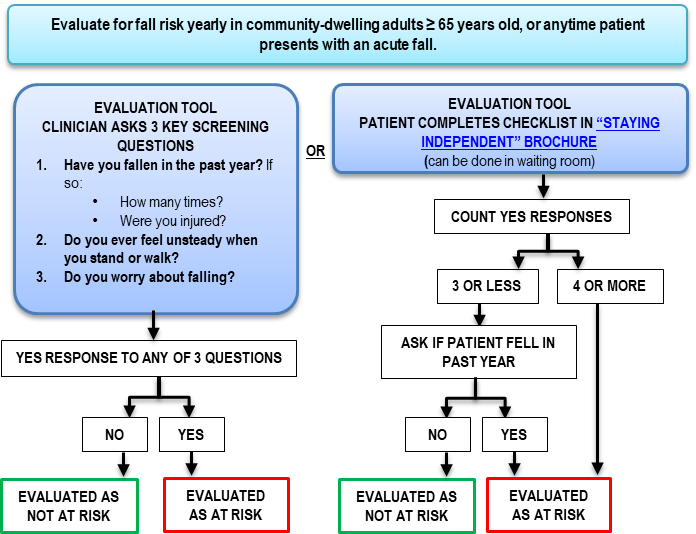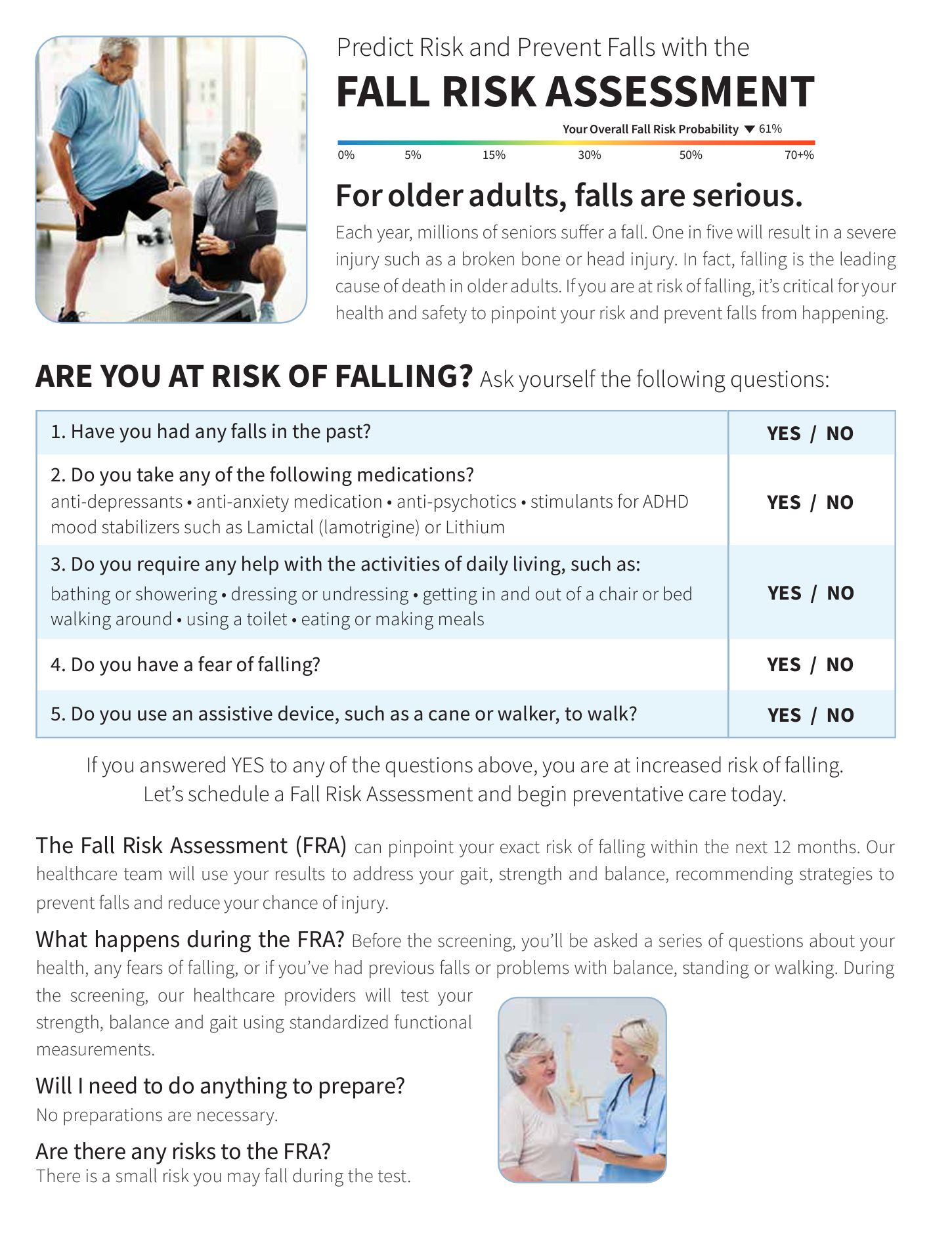The Best Guide To Dementia Fall Risk
What Does Dementia Fall Risk Mean?
Table of ContentsFascination About Dementia Fall RiskDementia Fall Risk Fundamentals Explained4 Simple Techniques For Dementia Fall RiskThe 25-Second Trick For Dementia Fall Risk
An autumn threat evaluation checks to see exactly how likely it is that you will certainly drop. The assessment typically consists of: This consists of a series of concerns about your overall health and if you have actually had previous drops or problems with balance, standing, and/or walking.STEADI includes screening, examining, and intervention. Interventions are recommendations that may lower your risk of falling. STEADI includes three actions: you for your threat of dropping for your risk elements that can be enhanced to try to stop drops (for instance, equilibrium problems, impaired vision) to decrease your danger of falling by utilizing reliable approaches (as an example, giving education and learning and sources), you may be asked numerous inquiries consisting of: Have you dropped in the previous year? Do you feel unsteady when standing or walking? Are you fretted about falling?, your copyright will examine your toughness, equilibrium, and gait, utilizing the following fall assessment devices: This examination checks your gait.
If it takes you 12 seconds or more, it may indicate you are at higher risk for a loss. This examination checks toughness and balance.
The settings will get harder as you go. Stand with your feet side-by-side. Move one foot midway forward, so the instep is touching the huge toe of your various other foot. Move one foot totally in front of the other, so the toes are touching the heel of your various other foot.
Dementia Fall Risk for Beginners
A lot of falls take place as an outcome of numerous adding elements; therefore, taking care of the danger of falling starts with determining the variables that add to drop threat - Dementia Fall Risk. A few of one of the most appropriate threat aspects include: Background of prior fallsChronic clinical conditionsAcute illnessImpaired stride and balance, lower extremity weaknessCognitive impairmentChanges in visionCertain high-risk medications and polypharmacyEnvironmental factors can also enhance the danger for falls, consisting of: Poor lightingUneven or damaged flooringWet or unsafe floorsMissing or damaged hand rails and get barsDamaged or poorly equipped equipment, such as beds, mobility devices, or walkersImproper use assistive devicesInadequate guidance of the individuals staying in the NF, including those that show aggressive behaviorsA effective fall danger monitoring program needs a complete medical evaluation, with input from all members of the interdisciplinary group

The treatment plan should also include interventions that are system-based, such as those that advertise a secure setting (ideal lights, hand rails, get hold of bars, etc). The efficiency of the interventions should be evaluated periodically, and the treatment strategy modified as necessary to Full Report mirror adjustments in the loss danger evaluation. Executing a fall threat monitoring system utilizing evidence-based best method can minimize the prevalence of drops in the NF, while restricting the potential for fall-related injuries.
9 Easy Facts About Dementia Fall Risk Described
The AGS/BGS standard recommends evaluating all grownups aged 65 years and older for autumn risk yearly. This testing contains asking people whether they have dropped 2 or even more times in the past year or sought clinical interest for a loss, or, if they have not dropped, whether they feel unstable when walking.
People who have fallen when without injury needs to have their balance and gait examined; those with stride or balance irregularities must obtain added assessment. A history of 1 autumn without injury and without stride or equilibrium troubles does not necessitate more analysis past he has a good point continued annual fall danger screening. Dementia Fall Risk. An autumn danger evaluation is needed as component of the Welcome to Medicare assessment

Fascination About Dementia Fall Risk
Recording a falls history is one of the top quality signs for autumn avoidance and monitoring. Psychoactive medications in certain are independent forecasters of falls.
Postural hypotension can often be alleviated by lowering the dose of blood pressurelowering medicines and/or stopping medicines that have orthostatic hypotension as a side effect. Use above-the-knee support hose and copulating the head of the bed raised may likewise decrease postural decreases in high blood pressure. The recommended components of a fall-focused checkup are received Box 1.

A Yank time better than or equivalent to 12 seconds suggests high autumn danger. Being unable to stand up from a chair of knee height without using one's arms suggests boosted autumn danger.